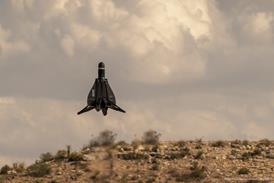Among manufacturers, airlines and independents, who maintains the most engines in the air transport market? The answer, according to Flight's ACAS database, depends on the thrust sector.
The extent to which original equipment manufacturers control the aftermarket, airlines perform maintenance in-house and third-party providers carve out shares of this business is different in the regional jet, narrowbody and widebody markets.
Engines are a large and growing part of the air transport maintenance, repair and overhaul market. MRO consultancy Aerostrategy has forecast that the fleet will grow from 40,000 engines in 2005 to 57,000 by 2015. ACAS data covers a fleet of more than 44,000 engines.
Over the same 10-year period, Aerostrategy has forecast, engines will grow from 35% to 38% of the overall air transport MRO market, the value increasing from $13.3 billion in 2005 to a projected $20.9 billion in 2015.
ACAS data shows how the engine maintenance market breaks down. The engines are grouped into three thrust sectors: below 18,000lb (80kN) 18,000-35,000lb and above 35,000lb. These broadly correspond to the three major sectors of the air transport market: regional, narrowbody and widebody.

Aircraft types in the below-18,000lb thrust sector are led by the Bombardier CRJ and Embraer ERJ regional-jet families, as well as the smaller Dornier 328Jet and larger BAe 146/Avro RJ and Embraer 170/175. Also included are several older narrowbody types, including the Boeing 727 and early 737s, McDonnell Douglas DC-9 and the Fokker F-28/F70/F100.
The major engine types in this sector are led by the General Electric CF34-3/8 on the CRJ and E170/175 and Rolls-Royce AE3007 on the ERJ. Others include the Honeywell ALF502/LF507 powering the 146 as well as the Pratt & Whitney JT8D and R-R Spey and Tay engines on the older narrowbodies.
ACAS data shows a total of 13,444 engines below 18,000lb thrust. Rolls-Royce is the OEM with the largest share of the maintenance market in this sector, with almost 1,940 engines (14.4%) under contract. Close behind, with just over 1,270 engine (16%) is the leading independent provider, Standard Aero. Delta TechOps, with just over 690 engines (5.1%) is the highest-ranked airline-owned maintenance contractor.
As expected, regional-jet engine maintenance dominates in volume terms, although older powerplant types remain important.R-R maintains Speys and Tays as well as the popular AE3007, while Standard Aero, now part of Dubai Aerospace Enterprise, overhauls both the AE3007 and CF34. Delta TechOps, meanwhile, services the CF34 and JT8D.
Aircraft types in the 18,000-35,000lb thrust sector are led by the Airbus A320 and Boeing 737 narrowbody families. This is the market with the highest growth in aircraft deliveries, and therefore engine services, forecast over the next 10 years. The sector also includes the Boeing MD-80/90/717 series, still operating in large numbers, as well as a growing number of Embraer 190/195 large regional jets.

The major engine types in this sector are the CFM International CFM56 and International Aero Engines V2500 on the A320/A340 and 737/MD-90. Aerostrategy has forecast that demand for V2500 maintenance will grow faster than the global average of the next two decades as narrowbody fleets expand, while the CFM56 market will grow slightly slower than the average because of the retirement of older -2/3 engines.
Other engine types in this sector are the P&W JT8D-200 series on the MD-80 and PW6000 on the A318 R-R BR710 on the 717 and GE CF34-10 on the E-190/195.
ACAS data shows a total of 18,595 engines in the 18,000-35,000lb thrust sector. GE Engines Services and Snecma Services are the number one and two maintenance contractors with a combined total of 6,762 engines (23% plus 13%) under contract. This no surprise given the number of GE/Snecma CFM56s in service. Third-placed MTU Maintenance services both the V2500 (MTU is part of IAE) and the CFM56, as well as the JT8D.
Aircraft types in the above-35,000lb thrust sector are the Airbus and Boeing widebodies plus the out-of-production McDonnell Douglas DC-10/MD-11 and Lockheed L-1011. Engines types are the GE CF6 and GE90 P&W JT9D, PW2000 and PW4000 and R-R RB211 and Trent family. ACAS data shows a total of 12,103 engines in this sector.
In this high-thrust market, airlines doing their maintenance in-house come out on top (16.6%), with the OEMs lining up behind them according to their share of the installed engine base. MTU makes a good showing (6.5%), as does Delta TechOps (4.6%).
Related articles:
United colours
Phoenix reborn
Inside the engine market
Triple time twinjet
Tough on weather, soft on environment
Polymer coating stops Virgin Blue fading
Source: Flight International























